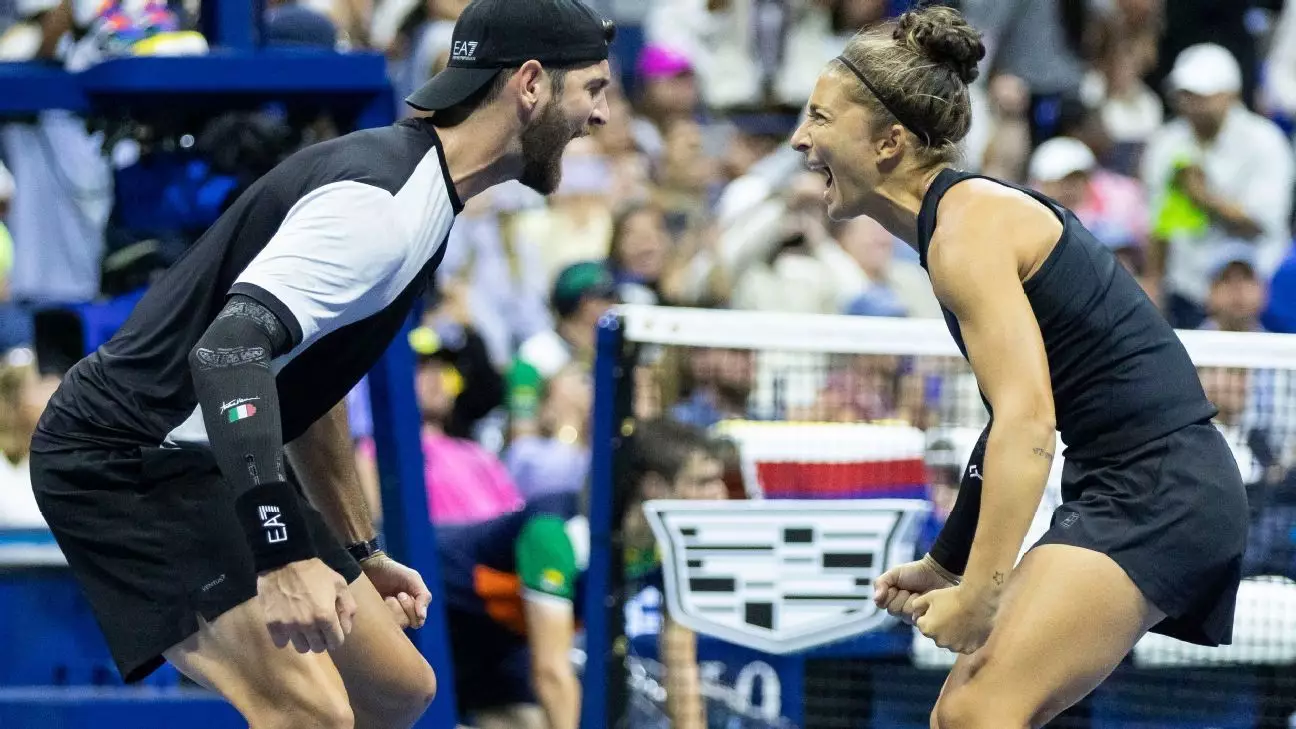In a sport often overshadowed by singles giants, the recent US Open mixed doubles final emerged as a compelling testament to the evolving landscape of tennis. Traditionally, doubles matches served as secondary attractions, featuring specialized players whose names rarely transcended the sport’s inner circles. However, the recent tournament, marked by strategic reforms and a shift in priorities, redefined what doubles can mean in major championships. It was not merely a competition; it was a statement—an assertion that doubles tennis possesses the capacity to enthrall, innovate, and challenge the status quo.
The most striking facet of this transformation was the tournament’s overhaul, which prioritized the participation of singles superstars over conventional doubles specialists. Critics initially dismissed these changes as a gimmick, fearing they would diminish the sport’s integrity and reduce doubles to a spectacle for casual viewers. Yet, the outcome proved otherwise. The final showcased a compelling blend of skill, strategy, and sheer determination, culminating in an underdog victory that delighted a packed crowd under Arthur Ashe’s iconic roof.
This bold experimental approach broke the traditional mold, emphasizing the entertainment value of doubles and carving a broader space for the discipline within the grand stage of American tennis. The fact that players like Sara Errani and Andrea Vavassori, largely considered doubles specialists, could ascend to victory against formidable, highly-ranked singles players underscores a fundamental truth: doubles is an art form in its own right. Their triumph refused to be overshadowed by the singles spotlight, instead standing as proof that the two formats can coexist and thrive side by side.
The Power of Underdog Spirit and Strategic Brilliance
Errani and Vavassori’s journey was not just an inspiring story of perseverance; it was a tactical masterclass that challenged preconceived notions about skill sets and tournament prestige. Having only recently been doubted for their participation—initially unlikely to secure wild cards—they seized the opportunity with a combination of aggressive net play, tactical positioning, and relentless coordination. Their ability to adapt swiftly, winning four matches in just two days, demonstrated resilience and the importance of teamwork.
What set these underdogs apart was their recognition of doubles’ unique demands. Instead of relying solely on baseline prowess or power serves, they leveraged net dominance, quick reflexes, and strategic positioning—elements often underestimated by critics dismissing the format as mere entertainment. Their victory was a testament to the nuanced understanding required in doubles, revealing that mastery of the format extends beyond individual talent and rests heavily on chemistry and tactical awareness.
Moreover, Errani’s status as one of the sport’s most decorated doubles players—holding a career Grand Slam with Roberta Vinci and an Olympic gold medal—brought an added layer of credibility and inspiration to their win. It was a reminder that doubles champions are not mere fillers for a tournament; they are craftsmen nurturing a different, equally vital facet of tennis.
This victory also carried an emotional weight, as Errani and Vavassori dedicated their triumph to the countless doubles players who rarely receive their due. Their success echoed a broader message: that doubles’ importance should be celebrated, not sidelined, within the grand tennis narrative.
Reimagining Audience Engagement and the Future of Doubles
Perhaps the most profound impact of the tournament was its effect on fan engagement. Despite initial criticism, the event drew sellout crowds with electric atmospheres—an unmistakable sign that the revamped format resonated emotionally with spectators. The packed stadiums and raucous applause demonstrated that when given the chance, fans are eager to embrace innovative formats that break from tradition.
Player reactions exemplified the significance of this shift. For instance, Christian Harrison’s remark about the unforgettable night of intense competition encapsulated how the new format rekindled passion for doubles. Even players who focus primarily on singles expressed admiration for the spectacle, acknowledging that the energy and crowd involvement had transformed their usual perspective on doubles matches.
The tournament’s success suggests a promising future: one where doubles garners more visibility, attention, and respect. By showcasing high-stakes, competitive matches with a diverse mix of players—including singles icons—the organizers effectively broadened tennis’ appeal. This experiment demonstrated that targeted reforms, when thoughtfully executed, can elevate a sport’s entertainment value without compromising its integrity.
Looking ahead, these developments could spark a revolution—encouraging tennis organizations worldwide to rethink how they promote doubles. Instead of treating doubles as a peripheral accessory, its potential as a standalone spectacle and skill showcase becomes undeniable. The US Open, in this sense, has set a precedent: that embracing innovation and challenging old paradigms can produce not only thrilling competition but also a more inclusive and dynamic sport for players and fans alike.
While traditionalists may balk at the departure from norm, the broader takeaway is clear: progress often requires risk. The real victory here isn’t just a title won by unlikely heroes, but the validation of a bold vision that reasserts doubles tennis’ rightful place in the sporting limelight. It is an affirmation that in the world of tennis, tradition and innovation can coexist, creating a richer, more engaging future.


Leave a Reply